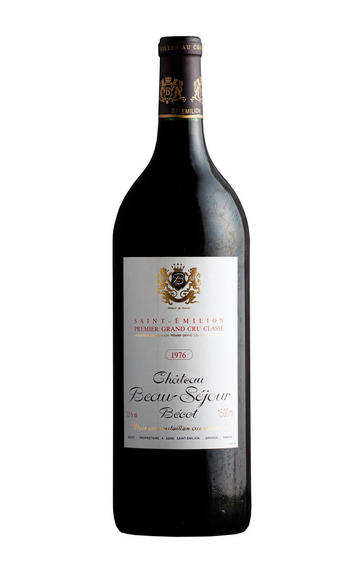


Tasting Notes and Scores
A blend of 70% Merlot, 24% Cabernet Franc and 6% Cabernet Sauvignon, this wine from a moderately sized vineyard was cropped at only 27.5 hectoliters per hectare and came in at 14.5% natural alcohol. The wine displays plenty of toasty oak and vanillin as well as some lead pencil shavings intermixed with cedar, black currants, cherry jam, chocolate and espresso. It is a relatively big, dense, full-bodied St.-Emilion that needs 5-6 years of cellaring and that should keep well for up to two decades. Drink 2018-2038.
– Robert Parker (Wine Advocate #205, Feb 2013)
Wine Advocate
Delivers a deliciously vibrant core of linzer torte, blackberry confiture and melted licorice snap notes, along with toasted spice and a mouthwatering apple wood accent on the finish The grip is briary and energetic, showing a fine, buried minerality. Should stretch out wonderfully in the cellar. Best from 2016 through 2028.
– James Molesworth (WineSpectator.com, March 2013)
Wine Spectator
Bright red-ruby. Complex, inviting nose combines black raspberry, licorice, mocha and mineral notes of flint and graphite. Suave, seamless and perfumed, with lovely integrated acidity giving shape to the sweet, fleshy, concentrated flavors of currant and graphite. Very ripe, rich and chewy but not overextracted. Finishes silky and long, with sound acids and very smooth tannins. An excellent vintage for this chateau.
– vinous.com, July 2013
Wine Independent
Layered and very structured, with blueberry and toasted oak character. Full and silky with ripe tannins. Long finish
– jamessuckling.com, April 2011
James Suckling
St Emilion 1er Grand Cru Classe. Sweetly ripe with just a suggestion of spirit and a fine oak; very nicely balanced, concentrated, vigorous, elegant, firmly, oak drily, tannic; black fruit sweet, quite complex, intense and fresh in flavour, a little hot and dry on the finish, but with excellent fruit fragrant length. Very good even if that oak dryness is not my style. Drink 2022-35.
– Bordeaux Mar/Apr 2011
Michael Schuster
Tasted at the Union de Grand Cru in London. The late malolactic fermentation meant that I could not score the wine during the primeur. Finally in bottle, the 2010 Beausejour Becot has fine definition on the nose, although it is tightly wound and not expressive at this particular moment. The palate is medium-bodied with firm tannins; masculine in nature but with plenty of depth on the finish. This is a commendable wine from an excellent estate, although I would pick the 2009 over the 2010.
– November 2012
Neal Martin

Bordeaux
View 12 pack case(s) available.

Bordeaux
View 6 pack case(s) available.

Bordeaux
View 6 pack case(s) available.

Bordeaux
View 6 pack case(s) available.
Pricing includes duty and VAT.
Want To
get In TouchPlease contact the LiveTrade team today for more information or to book a demo.
Contact us